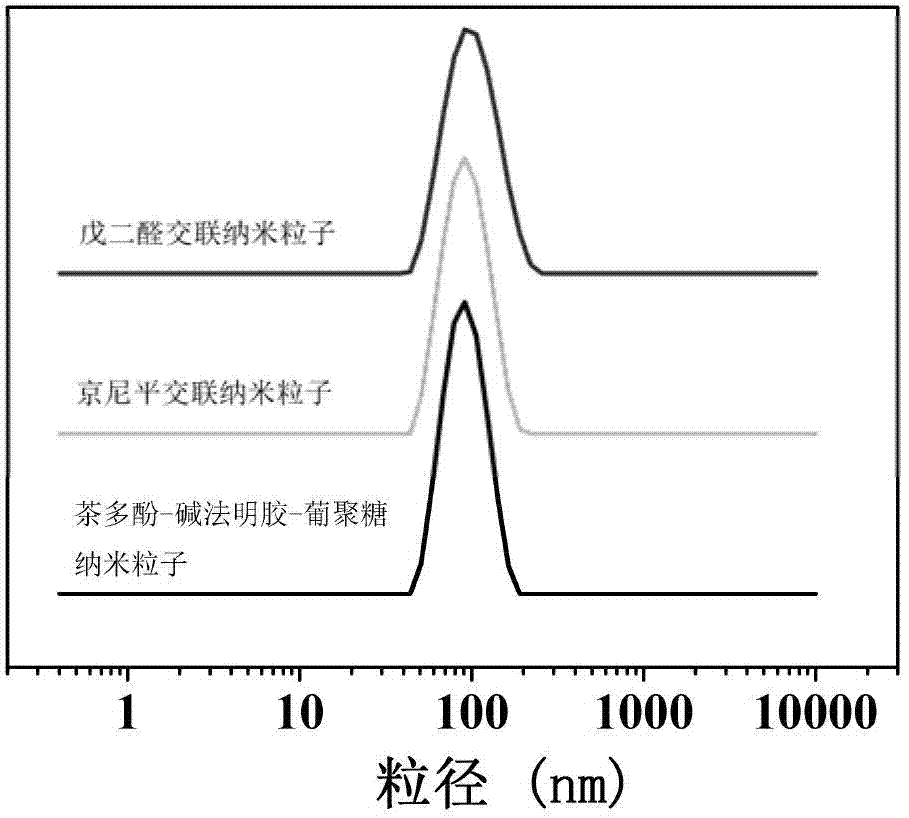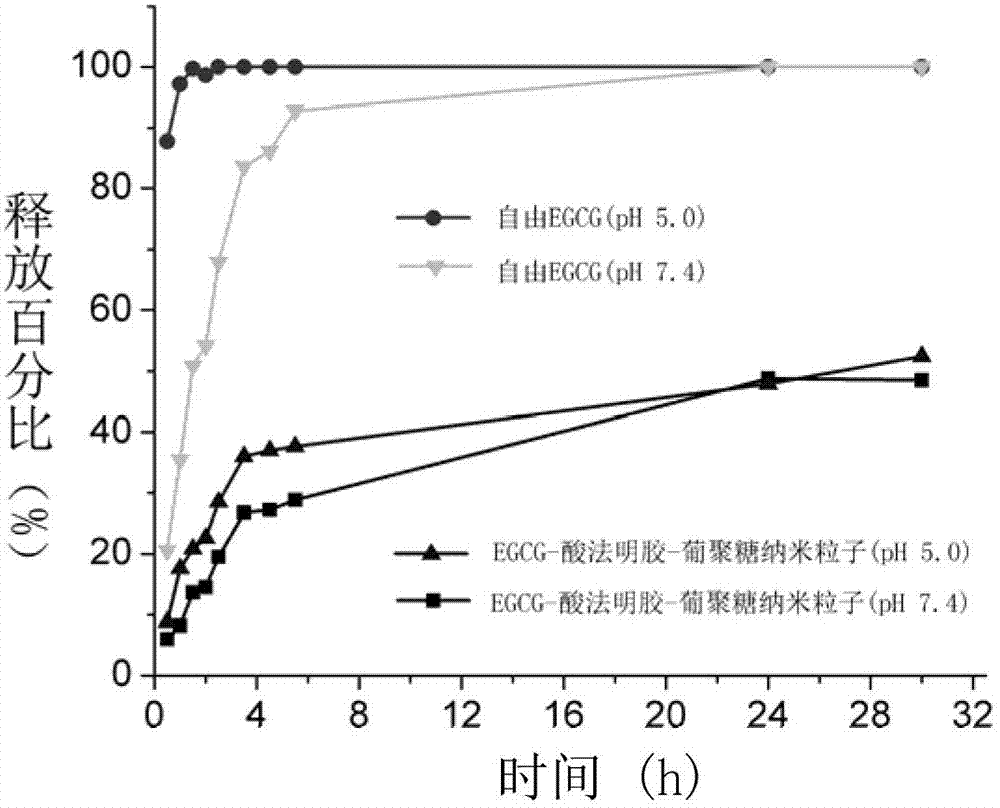Nanoparticles for encapsulating polyphenol active substances and preparation method thereof
A technology of nanoparticles and polyphenolic compounds, which is applied in the fields of polymer chemistry and functional food, and can solve the problems of poor dispersion and stability of nanoparticles, low loading capacity of nanoparticles, low encapsulation efficiency, and complicated preparation and purification process of nanoparticles To achieve the effect of protecting slow release and anti-degradation properties, good application prospects, and improving slow-release and anti-degradation properties
- Summary
- Abstract
- Description
- Claims
- Application Information
AI Technical Summary
Problems solved by technology
Method used
Image
Examples
Embodiment 1
[0030] Tea polyphenols-alkaline gelatin-dextran nanoparticles
[0031] Alkali-process gelatin and dextran of different molecular weights were subjected to Maillard reaction to synthesize alkali-process gelatin-dextran covalent conjugates. Add dextran with molecular weights of 10K, 40K, 70K and 500K to the above solution to prepare mixed solutions of dextran with different molecular weights and alkaline gelatin. After stirring and mixing, the pH value of the solution is adjusted to 7-9, and the solution is freeze-dried. Put the freeze-dried solid in a closed container filled with KBr saturated solution, keep the relative humidity at 79%, and place it at 60°C for Maillard reaction for 12-36h to obtain the reaction product alkaline gelatin-dextran covalent conjugate . After dissolving the Maillard reaction product with deionized water, mix the tea polyphenol solution and the alkaline gelatin-dextran covalent conjugate solution so that the final concentrations of the tea polyphe...
Embodiment 2
[0037] Epigallocatechin gallate (EGCG)-acid-processed gelatin-dextran nanoparticles
[0038] Acid-processed gelatin and dextran with a molecular weight of 70K were subjected to Maillard reaction to synthesize acid-processed gelatin-dextran covalent conjugates. The Maillard reaction conditions were the same as in Example 1. The Maillard reaction product was dissolved in deionized water to prepare a covalent conjugate solution of acid-processed gelatin-dextran with a concentration of 20 mg / mL. EGCG solutions with different concentrations and acid-processed gelatin-dextran covalent conjugate solutions are mixed to obtain EGCG-acid-processed gelatin-dextran nanoparticle solutions with different EGCG concentrations. Table 3 shows the light scattering results of nanoparticles formed by the covalent combination of EGCG and acid-processed gelatin-dextran at different concentrations.
[0039] Table 3. Particle size distribution, encapsulation efficiency and loading capacity of nanopar...
Embodiment 3
[0042] Other protein-polysaccharide nanoparticles encapsulating polyphenolic active substances
[0043] Using the above-mentioned similar method to encapsulate other polyphenol active substances, different polyphenol-protein-polysaccharide nanoparticles were prepared. The results of light scattering analysis, encapsulation efficiency and loading capacity are shown in Table 4.
[0044] Table 4. Particle size distribution, encapsulation efficiency and loading capacity of protein-polysaccharide nanoparticles encapsulating polyphenolic active substances
[0045]
[0046]
PUM
| Property | Measurement | Unit |
|---|---|---|
| Particle size | aaaaa | aaaaa |
| Particle size | aaaaa | aaaaa |
Abstract
Description
Claims
Application Information
 Login to View More
Login to View More - R&D
- Intellectual Property
- Life Sciences
- Materials
- Tech Scout
- Unparalleled Data Quality
- Higher Quality Content
- 60% Fewer Hallucinations
Browse by: Latest US Patents, China's latest patents, Technical Efficacy Thesaurus, Application Domain, Technology Topic, Popular Technical Reports.
© 2025 PatSnap. All rights reserved.Legal|Privacy policy|Modern Slavery Act Transparency Statement|Sitemap|About US| Contact US: help@patsnap.com



